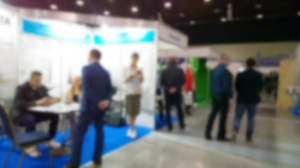Particle therapy at ASTRO 2023: Insights from Dr. Joern Meissner
October 18, 2023
Rad Oncology
Proton Therapy

By Dr. Joern Meissner
Access to proton therapy for eligible patients remains a significant challenge. Astonishingly, according to IBA, a mere 2.2% of U.S. patients whose health insurance covers proton therapy (ASTRO Group 1) actually receive this advanced treatment. The global scenario is even more staggering.
So, why is there a pervasive lack of access to proton therapy, despite its recognized effectiveness? Let's explore the landscape of the ASTRO 2023 exhibition to gain some valuable insights.
Among the proton therapy equipment vendors, IBA claimed the spotlight with the largest booth, closely followed by Mevion, Leo Cancer Care, and P-Cure. Surprisingly, Hitachi, a prominent player in proton and carbon therapy, had a rather modest booth, roughly similar in size to B-dot Medical. Sumitomo did not have a booth presence. Varian, Elekta, and RaySearch exhibited sizeable booths with dedicated areas for proton therapy planning. Several other exhibitors offered services, dosimetry equipment, and support to the proton/carbon therapy sector.
But does this accurately reflect the state of the industry? Perhaps a more indicative performance metric is the number of new facilities in development. Currently, the U.S. boasts 43 operational proton therapy centers, with over six under development. On a global scale, more than 120 proton and carbon therapy centers are currently in operation.
IBA stands as the undisputed global leader in proton therapy equipment, boasting an install base of over 75 centers, particularly following Varian Medical Systems' decision in 2022 to halt the sale of new proton therapy systems. IBA's recent win of a 10-treatment-room contract in Spain, thanks to the Amancio Ortega Foundation's contribution to the Spanish National Health System, further cements their leading position. Additionally, IBA recently made sales in Israel and China, expanding their footprint.
Hitachi, despite its small booth at ASTRO, possesses an impressive global presence with 15 proton or carbon/hybrid facilities in operation or under construction outside of Japan, along with 18 facilities within Japan itself.
Mevion, with approximately 15 centers, of which four are under construction, predominantly focuses on the U.S. and Chinese markets. When asked about potential expansion into other regions, Mevion's strategy revolves around considering service synergies before making the leap. Worth noting, most of Mevion's centers feature gantry installations, with the exception of Stanford.
|
|
|
You Must Be Logged In To Post A Comment
|
